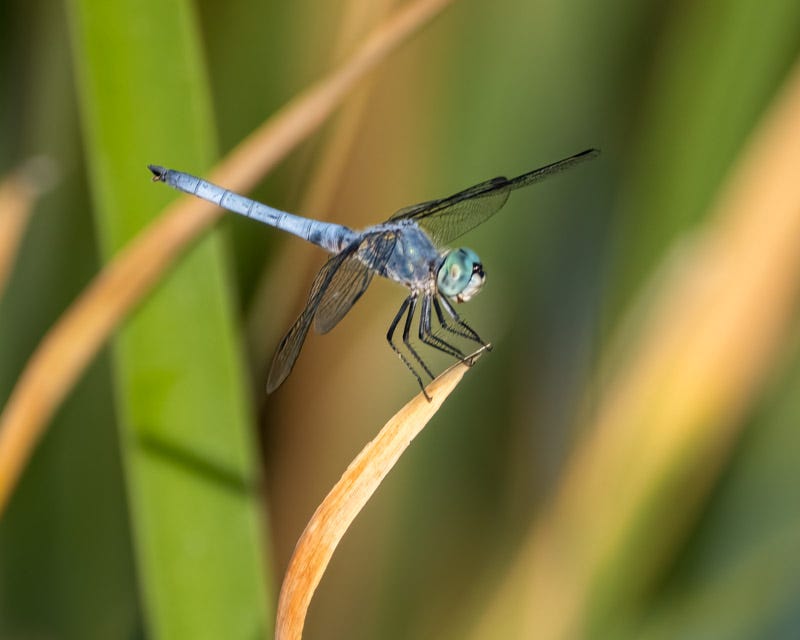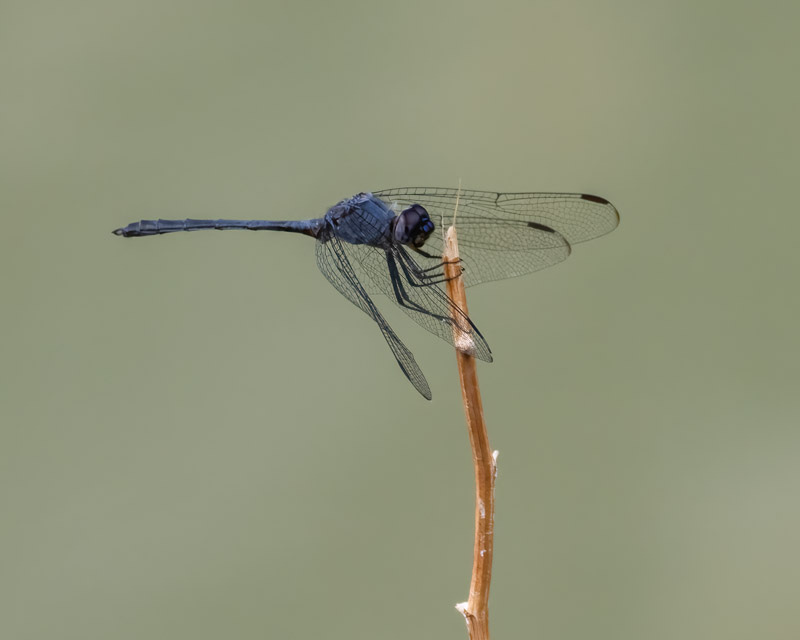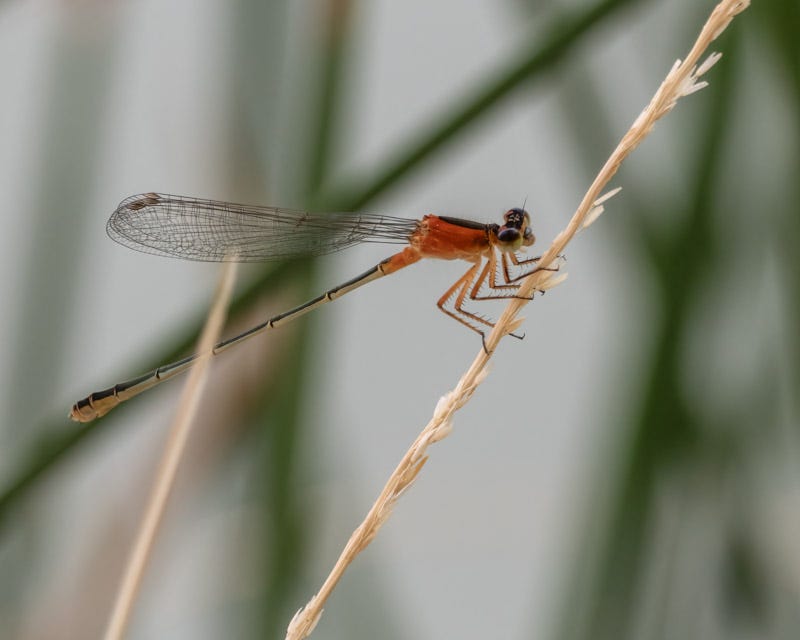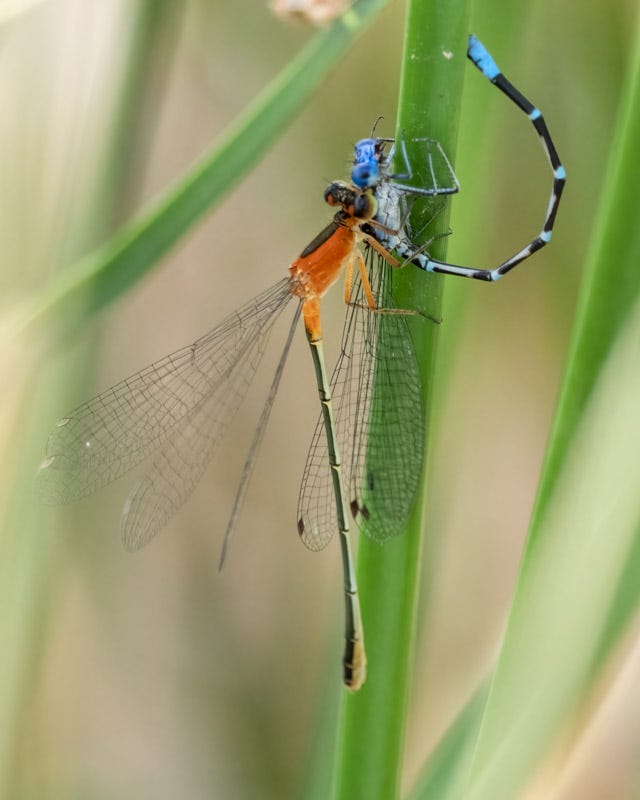Dragons and Damsels
But not Dragons breathing fire nor Damsels in distress!!!
.....Taking a quick break from my photos from San Juan. I've got many more to share, including other great shots of the Red Foxes, but my "local" photos have started to build up and they have begun 'talking' to me with a hint of jealousy!!!
We do have dragonflies and damselflies year-round in southern Arizona but summertime is the peak season to find them. Last week I made a point of looking for them and found a few of these wonderful creatures. The Blue Dasher may be the most common dragonfly in the Tucson area. Medium sized at about 1.5 inches long, the males have large green eyes and a blue abdomen that looks like it is covered in a white powder.
Flame Skimmers are not the most common dragonfly in the Tucson area, but the male's bright orange colors make it highly visible and attractive. The female Flame Skimmer, on the other hand, is a plain tan color. Flame Skimmers are about twice the size of the Blue Dasher.
Dragonflies usually perch with their wings horizontal and perpendicular to their body. The Setwing species of dragonflies perch with their wings in a forward position. This Black Setwing was seen at Agua Caliente Park. The male Black Setwing has a dark blue/black abdomen. Because dragonflies are so territorial, you can find them on perches and, if they leave the perch, they are likely to return to the exact same spot very quickly. That makes it much easier to observe and to photograph them.
Dragonflies and damselflies both belong to the same group of insects called Odonata. Dragonflies are generally larger with eyes that meet or nearly meet at the top of their head, and dragonflies typically hold their wings outstretched horizontally when resting. Damselflies are smaller and more slender, with eyes that are widely separated. Damselflies usually fold their wings over their abdomen when at rest. The Familiar Bluet is a very common damselfly in the Tucson area.
This damselfly is a female Rambur's Forktail. While the male Rambur's have green and blue colors, the females are a bright orange color.
Both Dragonflies and Damselflies are aggressive and efficient hunters. Studies suggest that Dragonflies have a success rate of well over 90% on each hunt. While Damselflies may not have quite the same skills, they too have excellent vision and can control each of their wings separately to allow for the ability to fly forward, backward, to hover, and to change directions instantly. I was watching this female Rambur's Forktail when I noticed another Damselfly come close. The Rambur's instantly flew up and caught the blue Damselfly and then landed to begin consuming her prey.
A slightly different viewpoint allows us to see the Forktail eating her prey. Dinner was a Blue-ringed Dancer, a different species of Damselfly.
Dragonflies and Damselflies are appreciated for their beauty, for their behaviors and for their roles in the environment. Each Dragonfly can eat dozens or hundreds of mosquitos per day. The Smithsonian has an excellent article about these insects.
Special thanks to Rich Bailowitz for his assistance and expertise. Rich, a local Tucsonan, is the author of a number of guidebooks and articles on Dragonflies, Damselflies and Butterflies including the "Field Guide to the Damselflies and Dragonflies of Arizona and Sonora". He is always a great resource for me.









Beautiful colors!
Vivid colors!